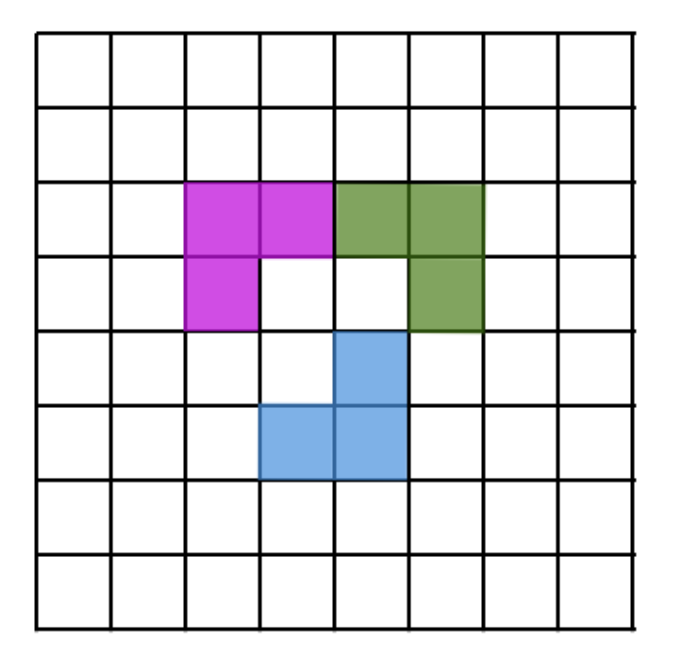Problems
On an 8×8 grid (like a chessboard), an L-corner is a shape made of 3 little squares of the board that touch to make an L. You can turn the L any way you like. We place the L-corners so that none overlap. What is the fewest L-corners you must place so that no more L-corners can be added anywhere? Here is an example of how three L-corners may look like:

In the king’s prison, there are five cells numbered from 1 to 5. In each cell, there is one prisoner. Kristen persuaded the king to conduct an experiment: on the wall of each cell she writes at one point a number and at midnight, each prisoner will go to the cell with the indicated number (if the number on the wall coincides with the cell number, the prisoner does not go anywhere). On the following night at midnight, the prisoners again must move from their cell to another cell according to the instructions on the wall, and they do this for five nights. If the location of prisoners in the cells for all six days (including the first) is never repeated, then Kristen will be given the title of Wisdom, and the prisoners will be released. Help Kristen write numbers in the cells.
Which numbers can stand in place of the letters in the equality \(AB \times C = DE\), if different letters denote different numbers and from left to right the numbers are written in ascending order?
One day, Claudia, Sofia and Freia noticed that they brought the same toy cars to kindergarten. Claudia has a car with a trailer, a small car and a green car without a trailer. Sofia has a car without a trailer and a small green one with a trailer, and Freia has a big car and a small blue car with a trailer. What kind of car (in terms of colour, size and availability of a trailer) did all of the girls bring to the kindergarten? Explain the answer.
The \(KUB\) is a cube. Prove that the ball, \(CIR\), is not a cube. (\(KUB\) and \(CIR\) are three-digit numbers, where different letters denote different numbers).
Can I replace the letters with numbers in the puzzle \(RE \times CTS + 1 = CE \times MS\) so that the correct equality is obtained (different letters need to be replaced by different numbers, and the same letters must correspond to the same digits)?
Of the four inequalities \(2x > 70\), \(x < 100\), \(4x > 25\) and \(x > 5\), two are true and two are false. Find the value of \(x\) if it is known that it is an integer.
At the vertices of the hexagon \(ABCDEF\) (see Fig.) There were 6 identical balls: at \(A\) – one with mass 1 g, at \(B\) – 2 g, ..., at \(F\) – 6 g. Callum changed the places of two balls in opposite vertices. A set of weighing scales with 2 plates is available, which let you know which plate contains the balls of greater mass. How, in one weighing, can it be determined which balls were rearranged?

There are 40 weights of weights of 1 g, 2 g, ..., 40 grams. Of these, 10 weights of even weight were chosen and placed on the left hand side of the scales. Then we selected 10 weights of odd weight and put it on the right hand side of the scales. The scales were balanced. Prove that on one of the bowls of the scales there are two weights with a mass difference of 20 g.
Pinocchio correctly solved a problem, but stained his notebook. \[(\bullet \bullet + \bullet \bullet+1)\times \bullet= \bullet \bullet \bullet\]
Under each blot lies the same number, which is not equal to zero. Find this number.